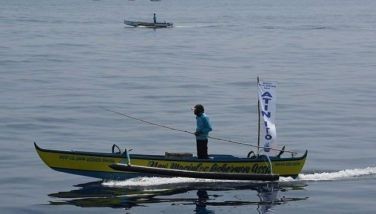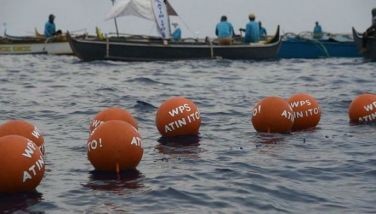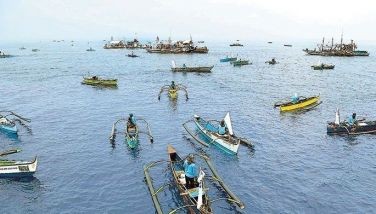Will rice market go up in flames again?
(Conclusion)
MANILA, Philippines - To understand how we got here, it is useful to recap the events of the last several weeks.
With a presidential election scheduled for May 2010 and increased import requirements because of typhoon damage that is officially forecast to have reduced this year’s rice crop as much as 1.0 mmt below last year’s output of 16.8 mmt, the Philippines has started its import campaign almost two months earlier than normal, despite comfortable government-held stocks. Its Nov. 4 tender contained a number of restrictive features:
• the minimum offer was 100,000 tons;
• the maximum that could be supplied from the cheapest eligible origin (Pakistan) was 50,000 tons;
• shipments via containers were prohibited;
• expensive supplier credits of 270 days were required, and participating firms had to show proof of having performed on an agricultural contract worth $33.75 million.
The week before the tender, Agriculture Secretary Yap was talking up the price: “We are not very far off from possibly another rerun of 2008.” However, the lowest prices offered in the tender came in much lower than expected. While NFA’s budget provided for awards of $540 CNF, the successful purchases came in at an average price of $475, with Vinafood 2 selling 150,000 tons and the balance sold by Daewoo with an option to ship from either Thailand or Vietnam.
These contracts had barely been signed before NFA issued a Dec. 1 tender for 600,000 tons for February-May arrival.
This tender was officially trumpeted as the largest ever, but it was not. (The May 5, 2008, tender was for 675,000 tons.)
Even though prices in the first tender came in substantially below its publicized purchase price of $543, NFA announced it was again prepared to pay this level.
The terms of this tender are even more restrictive: the minimum bid of 100,000 tons must now be made at a single price and participants must show experience
in having successfully executed a rice contract worth $81 million. The maximum tonnage allowable from Pakistan was increased to 100,000 tons. Once again, no container shipments and supplier credits of 270 days are mandatory.
In a move that Manila must surely have expected would excite the market, NFA one week later issued a second tender for 600,000 tons which would be held on Dec. 8 for the same delivery period (and terms).
Three days later, a senior NFA official confirmed that a third tender of 600,000 tons had been authorized, while an unnamed NFA official told the press that this tender would be held on Dec. 15 and an additional tender would be held one week later.
The official said that December’s third and fourth tenders would be for a total of 1.0 mmt. Indeed, on Nov. 23 the third tender for 600,000 tons to be held Dec. 15 was issued.
With an import window extending until September, it is both incomprehensible and reckless that the Philippines would attempt to buy 2.2 mmt within a single month.
Further, the tendering process raises several key issues. Why do they publicly disclose the price they are willing to pay in advance? Why do they announce future tenders while earlier tenders are still outstanding, a practice that arguably contributes to higher prices? Why are tender terms so restrictive, to the point where they seem designed to discourage suppliers who can provide rice at competitive prices?
And why did they pay prices so far above the market last year? Will they do so again this year?
While the Dec. 1 tender prompted offers of $598–687 CNF, statements by NFA officials suggest that it does not find the prices unreasonable and will purchase as much rice as its budget of $326 million will cover, including 300,000 tons from Vinafood 2. It is also reported that NFA will likely increase the budgets allocated for the Dec. 8 and 15 tenders, which could accommodate even higher prices.
India
Due to a combination of disappointing rains during the monsoon season and late floods, India’s main crop has declined significantly this year. However, because of its export ban on non-Basmati rice in 2008 and 2009, the government is holding unprecedented stocks. Still, these stocks could be strained if the government needs to release large quantities to control local prices.
On Oct. 14, India announced it was rescinding its 70 percent duty on imported rice to permit the private trade to import. On Oct. 30, three parastatals each tendered for 10,000 tons and within weeks there were rumors that the country was in negotiations with Thailand to import up to 2 mmt, with another 1 mmt possible after assessing the situation in March or July.
These rumors were subsequently confirmed by the minister of trade. Citing high prices offered on the three tenders, they were cancelled. Both the Indian ministers of agriculture and trade then indicated that no imports would be needed.
Vietnam
On Nov. 16, Prime Minister Dung instructed the ministries of trade and agriculture to monitor production and demand so as to ensure no rice shortage at Tet in February.
This may be a precursor to new export restrictions by Hanoi. While Vietnamese exporters were officially reported to be sitting on an unprecedented 1.6 mmt of stocks, it simply is not known if Vietnam will once again impose export restrictions – especially if Vinafood 2 seeks to maximize sales to both the Philippines and India.
What happens next?
Today’s world rice market has an unnerving similarity to 2008.
All three of the elements in the price explosion then are again in play, with the twist that India might add 2–3 mmt to world market demand in 2010 instead of subtracting 3 mmt from market supply in 2008.
Vietnam hopefully has learned an important lesson from 2008: withdrawing from the market when prices are high just guarantees they will have to sell later at lower prices. Still, concerns to keep domestic rice prices stable and affordable, especially over the Tet holiday, could prompt Hanoi to restrict exports.
It is hard to understand what the Philippines is doing with their aggressive tendering and officials actively talking about the potential for another rice price flare up. One explanation is that the country just wants to get its imports ordered before they have to pay even higher prices. If that is the case, quiet tenders over an extended period of time with flexible terms and longer delivery dates would be the better approach.
The alternative explanation is that the government actually wants to pay higher prices because these contracts carry larger “commissions” that fill political coffers. With such an explanation, NFA’s behavior suddenly makes sense.
How can another rice-price explosion be prevented?
Panicked hoarding by farmers, traders and consumers (and governments) can easily drive up prices to levels double or more what are justified by fundamentals of supply and demand.
In the first instance, calmer heads need to prevail. India can easily get through the next year without importing rice and, in any case, does not need to buy at this time.
Vietnam has more than adequate supplies for domestic consumption.
And the Philippines can smooth out its understandably large import needs over the next 10 months.
The 2008 crisis caused domestic food prices to soar in countries where the poor often spend 20 to 50 percent of their income on rice alone. Another rice crisis would be a serious blow to food security in a world where one billion people are already undernourished.
- Latest
- Trending































